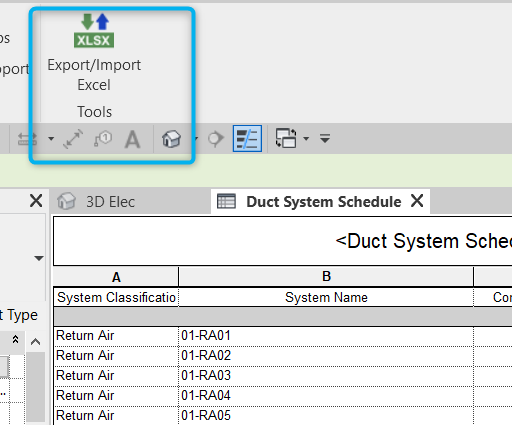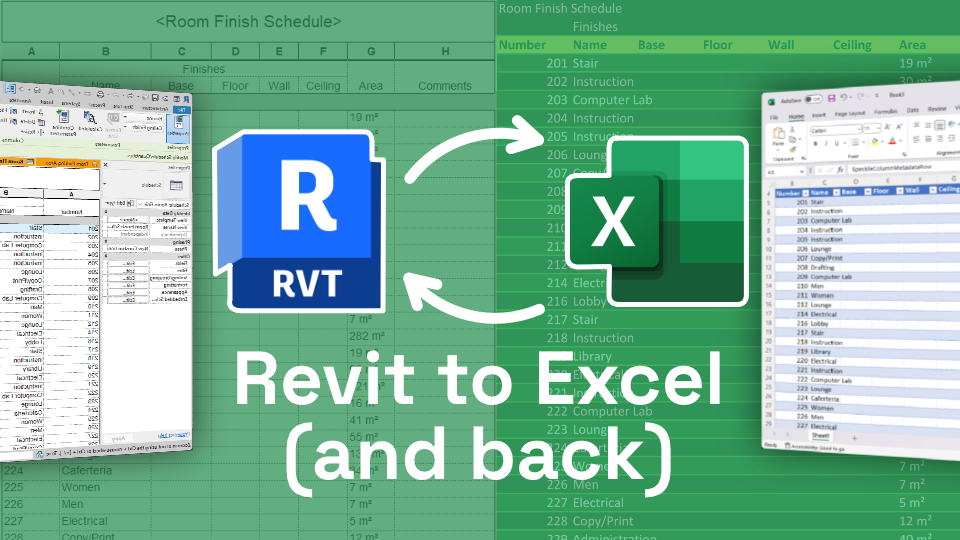Revit Tool Option for Streamlined Modeling and Design
Grasping the Art of Data Assimilation: Just How to Seamlessly Import Excel Data Into Revit
Are you battling to import Excel files into Revit efficiently? Look no further! In this post, we will lead you through the procedure of mastering the art of data combination. Discover the value of smooth assimilation in Revit and explore the Excel data format for Revit combination. Prepare yourself to prepare your Excel data easily and follow our detailed overview to import data right into Revit. With our ideal practices, you'll accomplish information integration success in a snap. Allow's begin!
Comprehending the Relevance of Data Combination in Revit
Comprehending the value of information integration in Revit is essential for seamless importing of Excel documents. When you incorporate information from Excel right into Revit, it permits you to effectively update and handle information throughout the whole task. This assimilation makes certain that your layout and building and construction procedure is updated and exact.
By incorporating data, you can conveniently import and upgrade criteria, schedules, and even geometry in Revit. This eliminates the requirement for hands-on data access, conserving you time and decreasing the threat of mistakes. With Revit's data assimilation capabilities, you can keep consistency and accuracy in your project, while likewise enhancing partnership among team participants.

Discovering the Excel File Style for Revit Combination

In order to effectively incorporate Excel files right into Revit, it is important to make certain that the data is formatted properly. This consists of appropriately labeling columns and rows, in addition to structuring the data in such a way that works with Revit's data schema. Revit uses particular criteria and groups to organize information, so it is very important to line up the Excel data with these criteria to make sure a seamless combination.
Additionally, it is very important to note that Revit just sustains particular data kinds when importing from Excel. These consist of message, numbers, and days. Any kind of other information types, such as solutions or conditional format, will not be recognized by Revit and may cause concerns throughout the assimilation process.
Preparing Your Excel Data for Seamless Import Into Revit
To make certain a smooth integration process, you'll need to correctly style and label the columns and rows in your Excel information before importing it into Revit. Beginning by analyzing your Excel data and identifying which columns and rows include appropriate details for your Revit project.
Following, make certain that the data in each column is correctly formatted. If you have a column for dimensions, make certain that all measurements are constantly formatted in the very same units of dimension. Revit depends on consistent format to accurately translate and import information.
Additionally, click resources it is essential to look for any vacant cells or disparities in your information. Revit may not be able to review or import data from cells that are vacant or include errors. It is suggested to evaluate your Excel information and clean up any inconsistencies before importing it into Revit.
Step-By-Step Overview to Importing Excel Files Into Revit
Once you've correctly formatted and classified your Excel information, you can conveniently import it into Revit by following this detailed overview. To start, open Revit and navigate to the "Insert" tab. revit tools.
Following, a dialog box will show up, permitting you to customize the import setups. Right here, you can select the worksheet you desire to import, specify the array of cells to import, and choose the ideal systems for your data. As soon as you've made your selections, click "OK" to continue.
Revit will certainly currently show a preview of your Excel information. Take a moment to ensure and review the preview that whatever looks right. If needed, you can make modifications to the import settings by clicking on the "Setups" switch.
Ideal Practices for Information Assimilation Success in Revit
Ensure you adhere to these finest methods to make certain successful integration of data in Revit. Firstly, it is crucial to arrange your data in Excel prior to importing it right into Revit. This means guaranteeing regular naming conventions, correct format, and precise information depiction. Next off, use Revit's integrated devices for information mapping. This will enable you to match the columns in your Excel documents with the corresponding specifications in Revit. Be conscious of the information and units types when mapping the information, as any discrepancies can bring about mistakes in the assimilation process.
One more important practice is to frequently validate and update your information. As your task proceeds, it is necessary to maintain your Excel file approximately date with any modifications made in Revit. This will certainly assist preserve the precision and uniformity of your information throughout both platforms. Additionally, take advantage of information recognition tools within Revit to determine any errors or variances in the integrated information.
Finally, it is advised to develop a clear process for data combination. This includes specifying obligations and duties, establishing a communication network between staff member, and establishing a regular cadence for information updates and evaluations. By adhering to these ideal practices, you can guarantee a successful and smooth assimilation of data in Revit, ultimately improving the performance and precision of your project.
Final Thought
To conclude, grasping the art of information integration is critical for smooth import of Excel submits into Revit. Recognizing the significance of data combination in Revit is the very first step in the direction of effective integration. Exploring the Excel documents layout for Revit assimilation aids in recognizing the Homepage restrictions and demands. Preparing the website here Excel data correctly and adhering to a step-by-step guide is important for a smooth import procedure. By following finest practices, you can ensure information integration success in Revit and make the most out of your job.
When importing data from Excel into Revit, it is important to recognize the data format and just how it can influence the integration procedure (revit tool). Revit makes use of particular specifications and categories to arrange information, so it is vital to line up the Excel information with these criteria to make certain a smooth assimilation
Be conscious of the systems and data kinds when mapping the information, as any kind of inconsistencies can lead to mistakes in the combination process.
Furthermore, make usage of information validation tools within Revit to identify any type of errors or incongruities in the integrated data.
